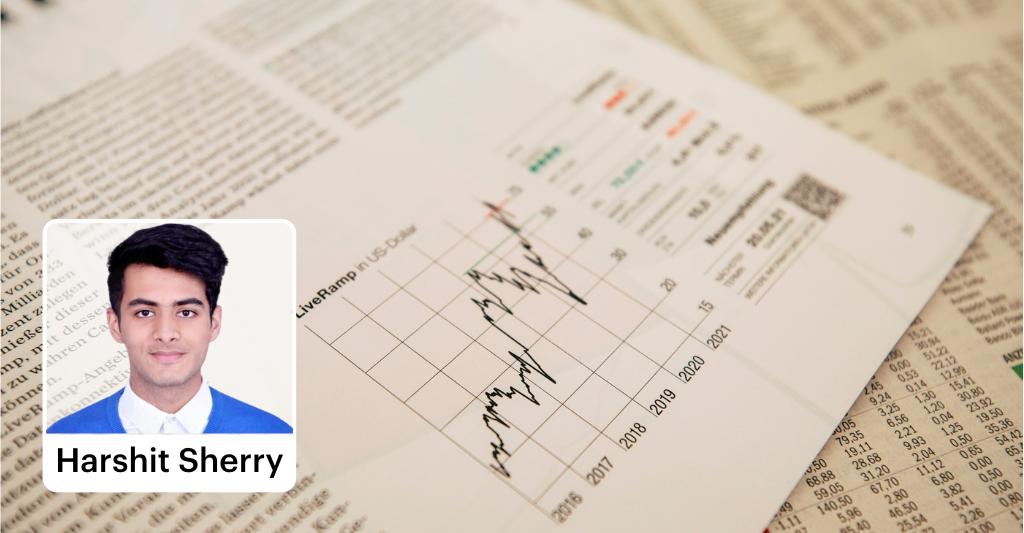Last Updated on Oct 19, 2023 by Harshit Singh
In the fast-paced world of global finance, exchange rates act as vital indicators of economic well-being and market feelings. Looking at recent trends in exchange rates is like peeking into a dynamic world where things change quickly. It’s a landscape marked by both unpredictability and new ideas, where financial scenarios can alter as swiftly as the numbers on a digital screen.
- Understanding Exchange rate markets
The FX market is a lively global marketplace that runs 24/7 on business days, connecting participants worldwide through electronic networks. What distinguishes this market is its continuous operation, seamlessly spanning various global stock exchanges. Traders can easily shift from the National Stock Exchange (NSE) during the day to platforms like NASDAQ or the London Stock Exchange (LSE) in the evening.
Participation in currency trading opens up a multitude of avenues, from forwards, futures, spot, and options markets to the opportunity to engage in the interbank market. Simultaneously, SWIFT, a member-owned cooperative, holds a crucial role in providing the security of financial transactions, facilitating seamless electronic payments between individuals and businesses, and transcending the boundaries of various banks. It’s worth noting that SWIFT is the biggest and most effective international payment network.
These interconnected networks cater to a diverse range of participants, from massive multibillion-dollar investment funds to independent individual traders. As the world economy continues to globalise, many large companies rely heavily on these transactions to support their foreign operations. As of April 2022, trading within the over-the-counter (OTC) FX markets reached an impressive $7.5 trillion per day, marking a notable 14% increase from the $6.6 trillion recorded just three years earlier.
Source: Bank for International Settlements
The US dollar maintains its paramount status as the world’s primary reserve currency, playing a prominent role in 88% of all international trade transactions. It is closely followed by the Euro, the Japanese yen, and the British pound sterling, which are among the most traded currencies worldwide.
Source: Bank for International Settlements
Within the realm of FX turnover, spot trading and FX swaps continue to reign supreme. In April 2022, FX spot market turnover reached a substantial $2.1 trillion per day, making up a significant 28% of the total global turnover across all financial instruments.
In 2020, a noteworthy trend saw FX swaps capturing a majority share of global turnover at 51%, up from 49% in 2019. This rise underscores growing investor participation and the rising importance of FX trading.
- Exchange rate movements
Exchange rate fluctuations significantly impact an economy, affecting trade balances, inflation, investments, monetary policy, confidence, budgets, economic growth, and foreign debt management. Stable exchange rates attract investments and promote growth, while volatility can create uncertainty, impacting government finances, economic expansion, and foreign debt. Policymakers, businesses, and individuals must adapt to these effects.
In 1991, India devalued the rupee by 18% to boost foreign reserves, investor confidence, and domestic competitiveness, resulting in an exchange rate of ₹7.50 per US dollar, compared to the previous ₹4.76 rate. Today, the INR/USD exchange rate is 82, indicating continued depreciation. This brings challenges like higher import costs but also opportunities such as improved export competitiveness, increased foreign investments, and greater stock market participation.
Currency depreciation has complex effects, both positive and negative, depending on one’s perspective and the context.
Various potential solutions can be examined as follows:
Table of Contents
Inflation
Think of inflation like the cost of your favourite fast-food burger, the Big Mac. When the price stays stable, it’s a sign that things are in balance. But if it suddenly shoots up, it’s like your burger is getting way more expensive, and your money doesn’t stretch as far.
Now, picture your central bank as the chef behind the counter. When burger prices are low (low inflation), they might offer discounts (lowering interest rates) to encourage you to buy more. But if burger prices start sizzling (high inflation), they’ll turn up the heat (raise rates) to cool things down.
What’s interesting is that sometimes, higher burger prices (inflation) can actually make your currency more popular. It’s like when your favourite burger place gets a lot of attention, and everyone wants a taste. This can lead to more investment in your currency and even higher interest rates. Savers might like that, but it could make borrowing a bit pricey.
So, just like the Big Mac Index shows price differences across countries, inflation affects how far your money goes, and central banks are like chefs trying to keep the burger (and your money) just right.
Macro Market trends
As we observe the ever-shifting tides of the global economic landscape, it’s clear that various factors play a pivotal role in the fluctuations of exchange rates. These factors aren’t just abstract concepts; they have real-world consequences for businesses, individuals, and nations alike.
- Emerging market economies, like Mexico and India, are gaining global prominence, causing shifts in demand and value for their currencies, the Mexican Peso (MXN) and the Indian Rupee (INR). Investors and businesses closely monitor these currencies as they navigate the changing dynamics in these markets.
- Globalisation, another major influence, continues to weave interconnected threads across borders. As international trade flourishes, exchange rates become pivotal markers of competitiveness.
- Populism and geopolitical factors add complexity to exchange rate movements. Political decisions and events can disrupt currency markets. Brexit, for instance, greatly affected the British Pound (GBP), leading to considerable volatility and uncertainty.
Currently, nations employ Regional Trade Agreements as mechanisms to address their exchange rate risks. Nevertheless, it’s crucial to acknowledge that fluctuations in exchange rates remain unavoidable as market forces primarily determine them.
Role of the Apex
Apex financial institutions, particularly central banks, closely monitor exchange rate fluctuations, impacting Emerging Markets’ economic growth. Some nations adopt managed currency arrangements and proactive policies, like sterilised interventions, to combat these fluctuations. This tactic deters domestic currency depreciation, reducing foreign investment appeal for domestic investors, maintaining economic stability, and boosting investor confidence.
Exchange rate intervention isn’t one-size-fits-all. Many emerging markets and small, open advanced economies consider it crucial for control, competitiveness, stability, and growth. Conversely, major advanced economies have largely refrained from direct interventions, favouring market-driven exchange rates in the past decade.
- Rising Beyond the Green Shadow: Challenging the Dollar’s Reign in Global Exchange
Just as Frank Sinatra envisioned the splendour of New York and crafted an ideology of American dominance, there’s no denying that numerous nations aspire to amass a wealth of US dollar reserves.
Around one-third to half of all global trade deals happen in dollars, and this has been a steady trend. It’s also involved in nearly 90% of foreign exchange transactions, and about half of all international debt is in dollars. The dollar’s popularity works a lot like a social network. People like using a currency that everyone else is using and trusts.
Nevertheless, the dollar has encountered numerous challenges in recent years, with people raising questions about its continued dominance. Some of these challenges are discussed below.
A. Hidden agenda of BRICS
The New Development Bank (NDB) is a multilateral development institution established by the BRICS nations, which include Brazil, Russia, India, China, and South Africa. Although its scale is relatively modest, with assets totalling $25 billion in 2022 (representing less than a tenth of the World Bank’s total assets), the NDB plays a significant role in a broader initiative aimed at challenging the global dominance of the US dollar.
One of its notable objectives is to provide 30% of its loans in the currencies of the borrowing nations, fostering financial diversity and reducing dependency on the dollar.
B. Sanction-facing countries’ conundrum
The rise in sanctions has intensified challenges to the US dollar’s dominance in global trade. As more countries face sanctions, they seek alternative ways to sustain economic relationships and conduct trade without relying on the dollar. This trend has led nations under sanctions to actively pursue agreements with other countries to use non-dollar currencies for trade transactions. This strategic shift helps them bypass sanctions and reflects a broader global effort to diversify the currency landscape and reduce the dollar’s influence in international commerce.
C. Changing Dynamics
China has firmly positioned itself as a leading advocate against the dominance of the US dollar, evident in its reduced US reserves and the use of Renminbi in trade agreements. India, too, has made strides in diversifying global trade by persuading nations like the UAE, New Zealand, and Singapore to trade in Indian rupees. To enhance international transactions, the Reserve Bank of India (RBI) has authorised banks from 18 countries to establish Special Vostro Rupee Accounts (SVRAs) for facilitating payments in rupees.
In recent times, the Euro has closed the gap with the US dollar, showcasing exceptional growth and approaching parity.
Source: Statista
D. Growing Popularity of Cryptocurrencies
Cryptocurrencies are gaining momentum as an alternative to traditional currencies, ushering in both fresh opportunities and challenges for currency traders. Their decentralised nature and rapid adoption have reshaped financial market dynamics, leading traders to adapt and devise new strategies within the evolving digital asset ecosystem.
Additionally, blockchain technology, the foundation of cryptocurrencies, has spurred the creation of innovative financial instruments and trading platforms, opening doors to alternative investments and novel trading tactics previously unavailable in traditional markets.
In a recent publication, Morgan Stanley advocates for the continued use of the US dollar as a “safe haven” in analysing global geopolitics. This aligns with the practices of institutions like the IMF and World Bank, which mainly operate in US dollars, highlighting the dollar’s global dominance and the complexity of transitioning away from it. Current talks and advancements suggest possible shifts in the global monetary system. However, it’s important to recognize that these changes are still in their infancy and might require several years to influence the worldwide financial structure substantially.
- Best Defence Stocks in India (2024) - Jan 18, 2024
- Emerging trends in Exchange Rate Markets - Oct 19, 2023




